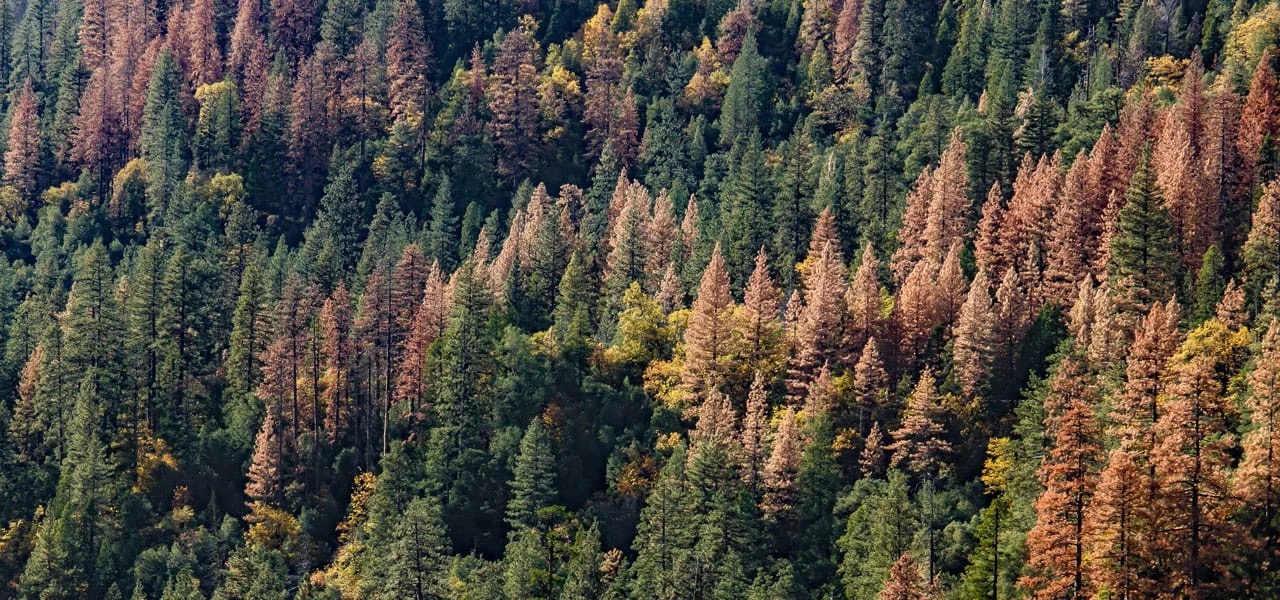
Why You Should Water Your Trees In Winter
Don't Let a Wet Spring or Summer Fool You
Even in years with above-average moisture, the ground can dry out quickly in fall (especially with warm, windy conditions). That's why you should be watering all susceptible plants at least every three weeks during the winter. If you’re not able to reliably water your landscape this winter, keep reading for information about our Winter Watering Program, give us a call at 303-674-8733 or click the button to request an estimate.
Although trees and shrubs are dormant during winter, they still need water to survive.
Here in Colorado, winter months (usually October through March) bring dry air, wind, low precipitation and little to no snow cover to provide soil moisture. The lack of moisture can result in death to plant roots before the winter is over.
To prevent root damage it’s critical to provide supplemental water during extended dry periods – even in winter.
Established trees have a larger root zone and so may be able to draw enough water from the surrounding soil. But newly planted and transplanted trees and shrubs will need extra watering throughout the cold winter months. And conifers, which retain their needles during winter, will also need regular water.
Common Trees That Need Winter Watering
According to the Colorado State University Extension service, the commonly-planted trees listed below will need supplemental watering during extended dry fall and winter periods.
- European white and paper birch
- Norway, silver, red, Rocky Mountain and hybrid maple
- Linden
- Alder
- Hornbeam
- Dogwood
- Willow
- Mountain ash
- Spruce
- Fir
- Arborvitae
- Yew
- Oregon grape-holly
- Boxwood
- Manhattan euonymus
Guidelines For Winter Watering
- Provide supplemental water from October through March.
- Water only when temperatures are above 40 degrees Fahrenheit and there is no snow cover.
- Apply water at mid-day to give it time to soak in before the ground freezes at night. Your goal is to get water down to about 12 inches below ground level – that’s where trees can best access it.
- Trees can have a root zone equal to or greater than their height (that’s often beyond the edge of the drip line). To make sure water is getting to the most critical roots, apply water at least all the way to the drip line.
- Plants in windy locations will need more water.
- Aim to water one to two times per month during the winter.
- A general rule of thumb is supply 10 gallons of water for each diameter inch of the tree (measured 6 inches above ground level). For example, a two-inch diameter tree needs 20 gallons per watering.
Additional Winter Protection From Dry Conditions
- Place 2 – 4 inches of mulch around the base of plants to help retain valuable moisture in the soil.
- For trees, layer the mulch at least as far out as the drip line.
- Make sure to pull all mulch several inches away from the base of the trunk. No mulch volcanoes!
How to Water Your Plants In Winter
You’re probably wondering how to water your plants in winter when you’ve already shut off the irrigation, blown out the lines and put the hoses away.
You have a couple of options for winter watering, some of which are easier than others.
If you have only a few smaller plants, you can use a watering can or bucket. Fill it up at the kitchen faucet and slowly water your plants, being careful to cover the full root zone area. You’ll probably need to make multiple trips to get enough water to your plants.
If the weather looks like it’ll be warm for a few days, you may want to take out a hose and use that. Just be sure to drain it completely when you’re done.
Our Winter Watering Program
The easiest option for watering your landscape plants and trees in winter is to call us at 303-674-8733!
We have a water truck that will bring irrigation water to your property. Our hoses can reach most areas of a typical property and our crew will ensure that all of your thirsty plants get a good soak whenever they need it throughout the winter.
But we don't just sprinkle or pour water over your plants. The water (including soil conditioner as described below, if desired) is injected into the soil at a 6”-12” depth where most of the absorbing roots are found. We use enough water to simulate a ½” of rainfall in the root zone of the plant.
Use Soil Conditioner for Extra Protection
To further protect your valuable trees and landscape plantings, we offer a supplemental soil conditioner as part of our Winter Watering Program. This is especially helpful in times of winter drought.
Two special ingredients are mixed with the water to help soil retain moisture and allow plants to grow with less water. Both of these ingredients are OMRI listed making this process an organic treatment.
The first ingredient is a humic acid supplement chosen because of its ability to build healthy soil.
The second component is a yucca extract (a concentrated plant extract meal containing steroid saponin). This natural compound is found in certain desert plants and helps these plants overcome the adverse growing conditions of the desert. When placed in the root zone, it helps trees and turf in much the same manner.



